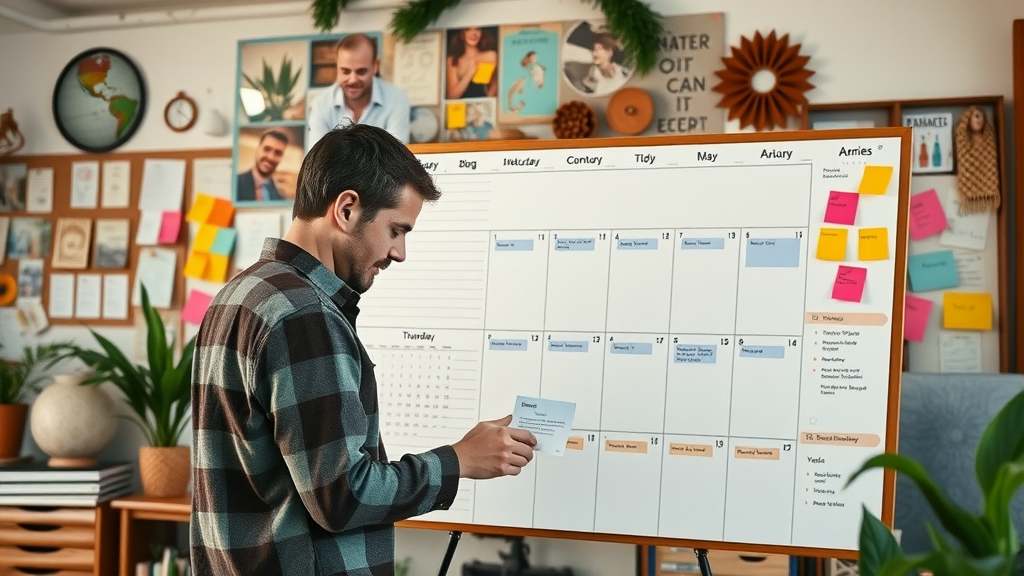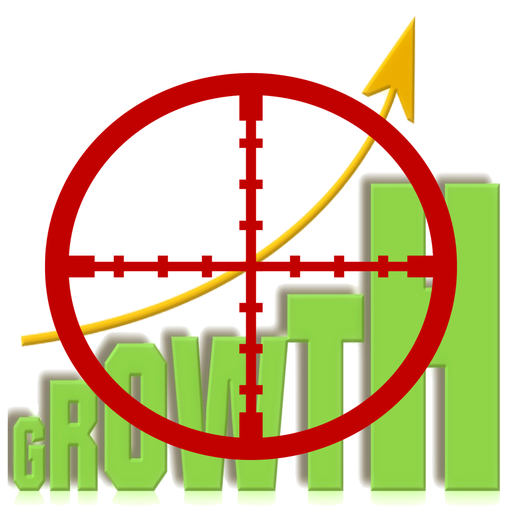Did you know that businesses with a well-documented blog content strategy are three times more likely to achieve their marketing goals than those without one? For modern businesses seeking to expand their reach and connect meaningfully with their audience, a clear, actionable plan for blog content is not just helpful—it's essential.

Startling Insights: Why a Blog Content Strategy Matters More Than Ever
In today's digital landscape, content creation is everywhere—but only those who approach blogging with a deliberate strategy see measurable results. The difference between a dormant blog and one that consistently builds brand awareness and organic traffic is a strong content plan rooted in clear goals and expert insights. Think of your blog like a strategic asset: without guidance from a concrete strategy, your blog content risks getting lost among the noise, missing out on organic search opportunities, and losing connection with your target audience. Content marketers and business owners alike need to understand that an effective blog content strategy bridges the gap between sporadic publishing and purposeful growth.
Blogging is no longer just about writing a quick update or promoting your most recent product. It’s about using data and analytics to drive editorial decisions, aligning blog posts with business objectives, and creating high-value posts tailored to your readers’ needs. As the marketing team aligns its efforts—from social media campaigns to the landing page design—a strong blogging strategy ensures cohesion. Investing the time upfront to develop a purposeful strategy can multiply the impact of your blog content, increasing quality engagement and fueling long-term business growth.
"Companies with a documented blog content strategy are 3x more likely to report success in their content marketing." – Content Marketing Institute

What You'll Learn about Blog Content Strategy
The fundamentals of a successful blog content strategy
Step-by-step processes for planning, writing, and optimizing blog content
Essential tools: keyword research, content calendar management, audience targeting
How to align blog content with overall content marketing and business goals
Common challenges and how to overcome them
Pro tips from blogging strategy and content marketing strategy experts
Defining the Blog Content Strategy: Core Concepts and Benefits
What is a Blog Content Strategy?
A blog content strategy is your roadmap for content creation, publication, and promotion. It involves setting clear objectives, defining your target audience and buyer personas, and mapping out the types of blog posts that will resonate most. Unlike sporadic blogging, a blog content strategy ensures your efforts are purposeful and aligned with your overall content marketing strategy.
The foundation of every successful blog is an organized approach to topics, keyword research, and distribution channels. This means understanding exactly why you’re blogging and who you’re writing for. A well-crafted content strategy empowers you to create content that directly speaks to your audience’s pain points, attracts organic traffic, and supports broader business objectives. Consistency, scalability, and measurable ROI are hallmarks of a proven blogging strategy.
The Connection Between Blog Content Strategy and Content Marketing Strategy
A blog content strategy isn’t separate from your company’s content marketing plan—it's a core part. Blog posts drive search visibility, nurture leads, and build relationships with potential customers. By aligning your blogging approach with broader marketing goals, you can amplify the impact of every post you publish. Integration with other types of content, like social media and landing pages, ensures that your marketing efforts are cohesive and mutually reinforcing.
For a marketing team, unity between blog content and the overall content marketing strategy is essential. Together, they work as a flywheel: blog content creates brand awareness and engagement, which can then be leveraged in campaigns across social media and digital advertising. This interconnected approach turns isolated blog posts into a strategic element powering your business growth.

The Role of Blog Posts in Content Strategy and Marketing
High-quality blog posts offer real value beyond surface-level marketing. They serve multiple roles in your content marketing arsenal: supporting SEO with targeted keyword research, answering audience questions, showcasing expertise, and driving leads to your landing page or product. Well-planned blogs reinforce your brand authority and act as a touchpoint for customers at different stages of the buying journey.
Every blog post represents an opportunity to move readers through your marketing funnel while improving your site's authority in the eyes of search engines. By embedding your blog strategy within your content strategy, you foster consistent quality, brand messaging, and measurable growth through every piece of content published on your site.
"Without a clear blog content strategy, even the best writers struggle to grow their blog or business." – Expert Content Marketer
How to Build a Powerful Blog Content Strategy: A Step-by-Step Approach
Step 1: Establishing Your Blogging Strategy and Goals
Start by clearly defining what you want to achieve with your blog. Your blogging strategy should be directly tied to your broader business and marketing goals. Do you want to boost organic traffic, increase lead generation, build brand awareness, or establish thought leadership? Once your goals are clear, you can measure the effectiveness of each blog post against these objectives. A focused approach allows your marketing team to avoid distractions and prioritize initiatives that drive the most value.
The best blog content strategy starts with transparency and alignment within your company. Set concrete KPIs, discuss these with your team, and ensure everyone—writers, editors, designers—understands the purpose behind each piece of content. This alignment ensures your blog remains a central driver of marketing strategy and business success.
Identifying Business Objectives Tied to Blog Content
Determine how your blog aligns with your organization's overall objectives. Are you supporting product launches, enhancing customer support, or fueling email marketing campaigns? This clarity enables more impactful content planning. Tie your blog goals to real outcomes like form submissions, downloads, or increased organic search rankings to ensure your content delivers value.
Step 2: Knowing Your Target Audience and Developing Buyer Personas
Understanding your audience is essential for blog content that stands out. Begin by researching who your potential readers are: their interests, challenges, and how they prefer to consume content. Developing detailed buyer personas gives your writers a clear picture of the types of topics, tone, and formats that will resonate.
By mapping out your target audience, you can tailor your blog content to anticipate their needs, solve problems, and inspire action. Accurate personas also streamline your content calendar and help prioritize which blog posts deserve focus based on audience demand and business goals.

Researching Your Audience across Channels and Social Media
Don’t limit your audience research to your own website analytics. Explore social media channels, online communities, forums, and competitor blogs to gather insights into what your target audience is discussing. Tools like Facebook Audience Insights or Twitter Analytics can reveal trending topics, pain points, and content consumption patterns. By taking this holistic approach, you’ll be able to prioritize topics that not only generate organic search but also create conversations across digital touchpoints.
Building Buyer Personas for Effective Content Marketing
Craft at least two or three unique buyer personas based on your findings. Include demographic details, what motivates them, their typical online behavior, as well as challenges they face that your content can solve. Referring to these personas during the content creation process helps keep your blog posts focused, relevant, and tailored to your ideal readers, increasing engagement and conversion rates.
Step 3: Conducting Effective Keyword Research for Your Blog Content Strategy
At the heart of every successful blog content strategy is robust keyword research. Dive deep into the phrases and questions your audience is typing into search engines. This research uncovers content gaps, trending topics, and long-tail opportunities, ensuring every blog post has a clear path to organic search visibility and traffic.
Begin with keyword tools like Google Keyword Planner, SEMrush, or Ahrefs, focusing on terms with high relevance, volume, and reasonable competition. Organize your content calendar around these high-priority keywords to steadily build authority, capture organic traffic, and support other marketing efforts.

Choosing Topics and Blog Posts for Organic Search
Once you've discovered your top-performing keywords, select blog post topics that align with both searcher intent and your business objectives. Use keyword clusters to develop recurring themes and pillar pages that can boost your site’s ranking for multiple related terms. By structuring each post for SEO—including headers, meta tags, and internal links—you ensure your blog content is positioned for long-term organic search success.
Step 4: Creating and Managing a Content Calendar
An organized content calendar is the beating heart of a reliable blog content strategy. It provides an overview of post themes, scheduled dates, responsible writers, target keywords, and promotional plans. Managing your calendar helps maintain consistency, track progress, and accommodate seasonal campaigns or trending industry topics.
Adopt editorial calendar tools like Trello, Asana, or Google Sheets to map out posts weeks in advance. A central, visible content calendar keeps your content plan transparent, helping both management and writers align on deadlines, expectations, and key strategic themes. This approach streamlines workflow, allowing content marketers to focus on producing quality posts at scale.

Tools and Templates for Blog Content Strategy & Organization
A wide range of tools exists to help you craft, organize, and monitor your content marketing strategy. Explore ready-made content calendar templates, AI-powered topic generators, and collaboration software to streamline your planning process. These resources not only save time but also empower your marketing team to create content faster, track analytics, and adapt strategy in real time.
Step 5: Writing High-Performing Blog Content
Effective content creation is rooted in planning, creativity, and data-backed insights. The most successful blog posts balance helpful information with persuasive storytelling—each post should captivate your target audience while guiding them toward a desired action, such as newsletter signups or landing page visits. Remember, quality trumps quantity: a single comprehensive, well-optimized blog post can outperform dozens of generic articles.
Collaborate with subject matter experts, use keyword research to inform post structure, and include engaging visuals to boost time-on-page. Regularly auditing your existing content ensures your blog remains relevant, valuable, and aligned with your overall marketing strategy.
Optimizing Blog Posts for SEO and Readability
Every blog post should be optimized for both humans and search engines. Use clear headings, scannable subheadings, bullet points, and short paragraphs. Incorporate keywords naturally, add alt text to images, and ensure meta descriptions are compelling. Tools like Grammarly, Yoast, or Hemingway can enhance readability and ensure your content meets SEO best practices.
Balancing Informative and Persuasive Content
The best blog content educates and inspires action. Offer insights your audience can act on, cite reliable sources, and start each post by addressing a real problem—the more value you provide, the more likely your readers are to trust your expertise and engage further with your brand. Blend storytelling, data, and a gentle call-to-action for maximum impact with each blog post.
Step 6: Promoting Your Blog Content Across Channels
Even the best content needs a push to reach new audiences. Go beyond "publish and pray"—instead, develop promotion tactics for every post. Repurpose your content into bite-sized pieces for social media, email newsletters, and guest posts. Build relationships with other content marketers and influencers for cross-promotion opportunities that amplify your reach beyond your own channels.
Leverage analytics to identify your strongest platforms, and use paid ads or sponsored social posts to drive quick visibility for high-priority blog content. Remember, your content marketing efforts amplify exponentially when every marketing channel works together.

Leveraging Social Media in Your Content Marketing Strategy
Share every new blog post across your active social media accounts—Facebook, Twitter, LinkedIn, Instagram, or Pinterest—tailoring your message to each platform. Use eye-catching graphics, hashtags, and calls-to-action to boost engagement. Community managers should monitor comments and discussions, turning social buzz into blog insights and future content ideas, ultimately fueling an agile and responsive marketing strategy.
Step 7: Measuring, Analyzing, and Refining Your Blog Content Strategy
Measurement is key to refining your blogging strategy over time. Use analytics dashboards to monitor key metrics such as page views, time-on-site, bounce rate, and conversions. Study which blog posts and topics generate the highest engagement and which channels deliver the most traffic. These insights inform pivots in your content plan—helping prioritize what works and retire what doesn’t.
Encourage a culture of experimentation, regularly reviewing performance across all marketing efforts. Competitor benchmarking, audience surveys, and ongoing keyword research will keep your strategy responsive and results-driven.
Key Metrics and Analytics Tools for Content Marketers
Track metrics like organic search growth, referral traffic, top-converting landing pages, and engagement rates. Use Google Analytics, SEMrush, or HubSpot for deep dives into audience data and content performance. These tools help each content marketer determine which tweaks will bring greater results, whether it’s refining article headlines, improving internal links, or expanding into new content types and platforms.

Continuous Improvement for Your Blogging Strategy
Set a review cadence for your blog content strategy—quarterly is ideal. Gather your marketing team to recap wins, challenges, and new opportunities. Use fresh data from analytics tools to adjust your content calendar, refine buyer personas, and keep your blog aligned with business growth. Continuous improvement ensures your blog content strategy remains adaptable, competitive, and a true engine for success.
Expert Tips: Content Marketer Advice for an Effective Blog Content Strategy
Batch-create blog posts when possible to maintain consistency
Use data-driven insights to refine your content strategy
Constantly update buyer personas as your audience evolves
Repurpose blog content into social media and email marketing assets
"A blog content strategy is not set in stone—it must evolve with your market, competition, and readers’ needs." – Leading Marketing Strategist
Common Pitfalls to Avoid in Your Blog Content Strategy
Ignoring keyword research and SEO best practices
Overlooking your target audience’s pain points
Inconsistency in publishing blog posts
Failing to measure results and adapt strategy
People Also Ask: Blog Content Strategy
What is a blog content strategy?
A blog content strategy is a detailed plan for creating, publishing, and promoting blog posts that align with your business, marketing, and audience goals. This strategy includes setting clear objectives, planning content themes, conducting keyword research, defining your target audience and buyer personas, managing a content calendar, and regularly reviewing performance to ensure continued growth and engagement.

What is the 80 20 rule for blogging?
The 80/20 rule for blogging suggests that you should spend 20% of your time creating blog posts and 80% of your time promoting them. This principle emphasizes the importance of content promotion across social media, email, and other channels to maximize visibility, reach more of your target audience, and achieve better content marketing results.
How to get 1000 views per day on a blog?
To reach 1,000 daily views on your blog, focus on publishing consistent, high-quality content using strategic keyword research, targeting topics with demand. Promote blog posts through social media, forums, and email marketing, and network with other content marketers. Analyze traffic data to refine your approach and double down on content types and topics that drive the most engagement.
What are the 7 steps in creating a content strategy?
The seven steps are: 1) Set clear goals, 2) Research your target audience and build buyer personas, 3) Conduct keyword research, 4) Plan content topics and formats, 5) Create and maintain a content calendar, 6) Produce, optimize, and publish quality content, and 7) Promote, measure, and continuously improve your strategy using analytics and feedback.

Tables: Blog Content Strategy Tools and Templates
Tool Name |
Purpose |
Key Features |
Best for |
Pricing |
|---|---|---|---|---|
SEMrush |
Keyword Research & SEO |
Keyword analytics, competitor analysis, content audit |
Content marketers, SEO teams |
From $119.95/month |
Ahrefs |
SEO & Backlink Analysis |
Keyword explorer, site audit, content gap analysis |
SEO professionals, agencies |
From $99/month |
Trello |
Content Calendar Management |
Drag-and-drop board, team collaboration, calendar view |
Editorial teams, bloggers |
Free/$5+/month |
Google Analytics |
Performance Analytics |
Traffic tracking, goal setting, engagement analysis |
All marketers |
Free |
CoSchedule |
Content Calendar & Social Scheduling |
Editorial calendar, social media integration, automation |
Marketing teams, content creators |
From $29/month |
FAQs: Essential Questions on Blog Content Strategy
What makes a blog content strategy successful?
A successful blog content strategy is well-documented, data-driven, and audience-focused. It aligns with business goals, is regularly updated based on analytics, and includes processes for keyword research, content optimization, promotion, and review. Success comes from consistency, relevance, and ongoing adaptation to audience needs and market changes.
How often should a blog content strategy be reviewed?
Ideally, review your blog content strategy every quarter. This allows you to update your content plan based on performance analytics, emerging trends, and shifts in your target audience’s needs, ensuring your approach stays fresh and aligned with business goals.
Is blog content strategy different for B2B vs B2C businesses?
The fundamentals remain the same, but B2B blog content often focuses on thought leadership, detailed guides, and longer sales cycles, while B2C strategies typically prioritize engaging, shareable, and timely topics. Both require in-depth audience research, keyword targeting, and performance tracking, but messaging and format should be adapted to fit the respective audience.
Can blog content strategy align with social media marketing?
Absolutely. An integrated strategy leverages the strengths of each channel, repurposing blog content into social media posts, driving cross-channel promotion, and ensuring consistent messaging. Successful marketing teams use blog posts as core content, distributing value across all digital touchpoints.
Watch this professional explainer video featuring expert interviews and animated step-by-step guides, designed to help you build and implement a results-driven blog content plan from scratch.
See real-life examples of brands that transformed their business outcomes through a strategic approach to blog content. Case studies demonstrate actionable techniques you can implement today.
Key Takeaways: Blog Content Strategy Essentials
A documented blog content strategy is essential for consistent growth.
Know your audience, conduct keyword research, and plan content in advance.
Use analytics and expert advice to continually improve your blogging strategy.
Always elevate your blog content to align with marketing strategy and business objectives.
Conclusion: Take Action on Your Blog Content Strategy
Put these expert strategies into action—start documenting your blog content plan, and make your blog a growth engine for your business today.
Ready to Elevate Your Blog Content Strategy?
Struggling to make All of your Marketing Strategies Work Together Seamlessly and Effortlessly? Omni-Channel or Cross-Channel, they Start with Content. Click the Link and Get our Ultimate Guide for Building a Content Marketing Strategy for Small Business.
For More Information on this Topic, Go To our online marketing magazine "Effective Marketing Strategies" at this Link.
Sources
To enhance your understanding of blog content strategy, consider exploring the following resources:
“How To Develop An Effective Blog Content Strategy”: This article provides a comprehensive guide on planning, creating, and managing blog content to achieve specific business objectives. (positional.com)
“Blog Content Strategy: How to Create One in 10 Steps”: This resource outlines a step-by-step approach to developing a successful blog content strategy, including topic brainstorming and keyword research. (compose.ly)
These resources offer valuable insights and practical steps to help you plan, write, and grow your business through effective blog content strategies.
 Add Row
Add Row  Add
Add 




Write A Comment